Michael T. Sanchelli: On Relief
The Sanchelli family lived in the Swede Hollow neighborhood of St. Paul during the Great Depression. In his memoir, "22 No. Phalen - The Depression Years," Michael T. Sanchelli remembered the hardships his family faced, and how the family pulled together to get by.
Memoir Excerpts
My father got laid off at the railroad, but he did get a job at Paper Calmenson's [a warehouse company that stocked steel] on E. 7th and Earl Street. He hadn't worked there for more than a couple months and he came home with a bandage on his arm. He got hit with a piece of flying steel. Three weeks later he came home with a bandage over his eye and my mother was really upset. "Oh it's nothing," he said, but it was more serious than everybody thought. The doctor told him his eye was too badly damaged and his vision was very much impaired in that eye. On the advice of some people, he sued Paper Calmenson, but unlike the settlements of today, he got eleven hundred dollars and it was doled out at eleven dollars a week. Well, for almost two years we had a steady check coming in. The big depression was now upon us. There was talk of many suicides among the rich that had lost fortunes, but most of the people just lost their jobs and income.
Money Went Further Back Then
Prices reflected the harsh economic times of the 1930s. Michael recalled what a few pennies could buy during the Depression – if you had the pennies.
My mother would send me downtown to one of the butcher shops. She gave me a dollar and ten cents. I would first go see a nickel show and then to the butcher shop and buy a dollars worth of meat. I got enough meat to fill a large shopping bag and then take a streetcar home. I got [off] at east 7th and Bradley and took the long steps down into the Hollow. It would be almost unbelievable today that so much could be gotten for a dollar. Pork chops were seven cents a pound, hamburger two and three cents a pound, eggs, three to five cents a dozen. I went downtown to the U.S. Mail Order store on Sibley and 7th St. and bought a pair of shoes and a pair of jeans for a dollar and eighty cents. So up to about 1930 the money we got each week was [sufficient] for us, after that was gone, then we were in bad shape.
Doing Without and Getting Some Relief
In the early years of the depression, before government programs were put in place to help, "making do" and "going without" became a way of life for the Sanchellis and many other families.
There wasn't any such thing as Welfare; it seemed that money disappeared from the face of the earth.
I was going to Cleveland Jr. high school at the time and was ready to go to Johnson High School. I came home and cried because I had no money for books, no decent clothes. There was nothing to make a lunch, so I didn't eat at noon hour. I went by the lockers and did my homework.
The local governments did start a relief plan. It was more a pain in the neck than relief. We had to go to the old Hamms [residence] on [Cable] St. right above, on the east side of Swede Hollow. You would get a grocery order. Now, when I say grocery order it wasn't what I would call groceries: dried prunes, dried apples apricots and peaches, dried navy beans, sometimes a can or so of corn pies or string beans. A family order for my family went into one large bag, that was for the month.
The store that the order was made out to was no where near home. I had to borrow a coaster wagon and go to Alexander's food market on Como and Western to get an order. Streetcar fare I think was 7 cents at that time but we didn't have 14 cents for the round trip. If we did have it, I'm sure my mother would have bought meat with it.
Getting Creative With What We Had
One of the most important items in our home was flour, 100 lbs. of it. We needed it for bread and at a price affordable. It sold for $4.50 a 100 lbs. It was a once a month item. Thank goodness we had rabbits and chickens.
Clothes, that was another big problem - shoes, even worse. You were a marked individual when you put on a pair of pants that you got from the relief places; welfare gray, starchy, some company must have make a million pair and sold them to the government.
Most of the kids in the Hollow went barefooted after school was out for the summer. Tennis shoes - nobody bought tennis shoes. They wore out too quick, my father had a shoe last and I learned how to repair the soles and heels of my shoes and also the rest of the family. We found some heavy conveyer belting and used it for soles and heels. Leather was tough to get. When I didn't have any belting we were out of luck. Remember the old saying, "my soles of my shoes were so thin that I could step on a dime and tell if it was heads or tails?" Well, we had holes in our shoes so large that if we stepped on a dime, we could pick it up with our toes.
When we couldn't repair our shoes, we would go down to the binder dump and look for some old linoleum. This we would cut to size and put on the inside of the shoe, as an inner sole. Linoleum was always available.
Scavenging for Food
Sometimes food could be found for the Sanchelli family by scrounging in a nearby dump, or through the kindness of local grocers.
...The grocery stores from downtown would, as the old farmers market would, dump their old produce that had started to turn brown a little. At the binder dump, we kids would peel of the leaves of the lettuce and the cabbage until we got to the good part and take it home.
We learned of a place on Jackson St. and Tenth, near the old Market, Tubessing and Nelson's. We would ask the boss of the place if we could have the overripe bananas. He would give us the O.K. to go down the basement and get them. We had gunny sacks and sometimes we would get a fourth of a sack a piece. There usually were three or four of us. We filled our stomachs first.

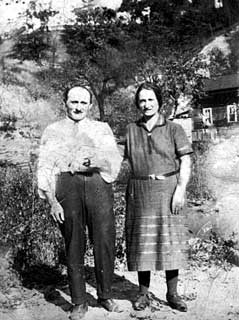
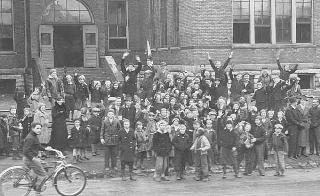
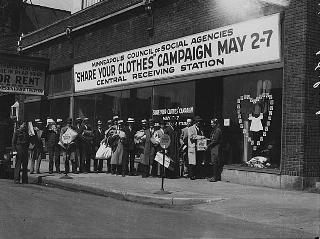
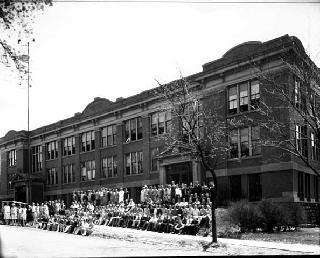
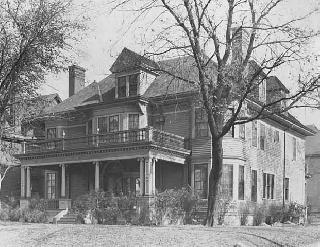
Source
Sanchelli, Michael T. Reminiscences, 1991-1993. Minnesota Historical Society Manuscripts Collection.


